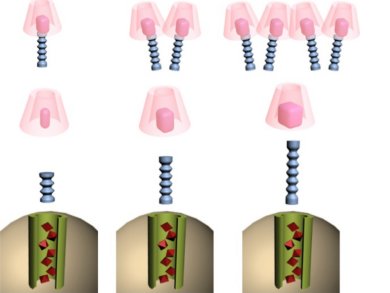Mesoporous silica nanoparticles (MSNPs) have been widely studied for applications in drug delivery because it is possible to control the opening and closing of their pores through the ligands on the particle surface. This option makes it possible to control the release of drugs and create stimuli-responsive delivery vehicles.
In order to optimize the pore capping, Yanli Zhao and co-workers, Nanyang Technological University, Singapore, have developed a catalysis screening method to study glutathione-triggered drug release from MSNPs in detail. They used this system to investigate the effect of chain length, terminal group, and amount of ligand on the loading capacity and release kinetics of doxorubicin encapsulated in β-cyclodextrin-capped MSNPs.
In the comparison between nanoparticles capped with different amounts of ligand, they found that intermediate amounts of ligand gave the highest loading capacity, since too many ligands could block the pores, but too few ligands could result in leakage. However, in kinetic tests, the lowest ligand coverage tested resulted in the highest amount of drug being released, which could be explained by the fact that glutathione (the trigger) could more easily access the reaction site and thus more easily release the cargo from less-covered nanoparticles. To confirm the in vitro relevance of these results, drug release was also studied in B16-F10 melanoma cells with fluorescence imaging, and this data correlated well with the results of the kinetic tests.
- Drug Encapsulation and Release by Mesoporous Silica Nanoparticles: The Effect of Surface Functional Groups,
Si Yu Tan, Chung Yen Ang, Peizhou Li, Qi Ming Yap, Yanli Zhao,
Chem. Eur. J. 2014.
DOI: 10.1002/chem.201403551




